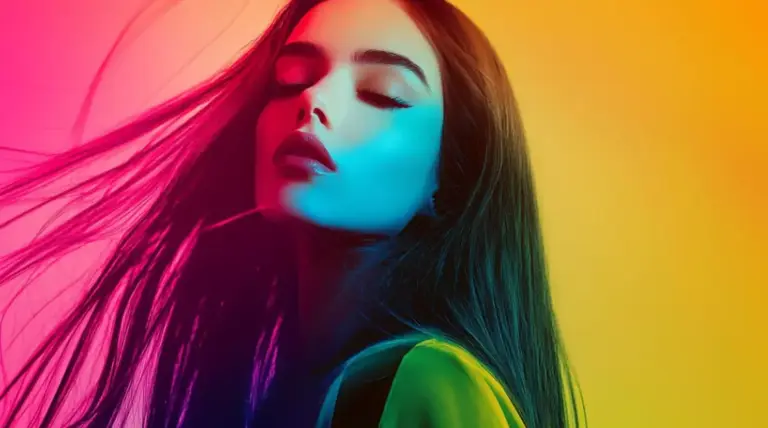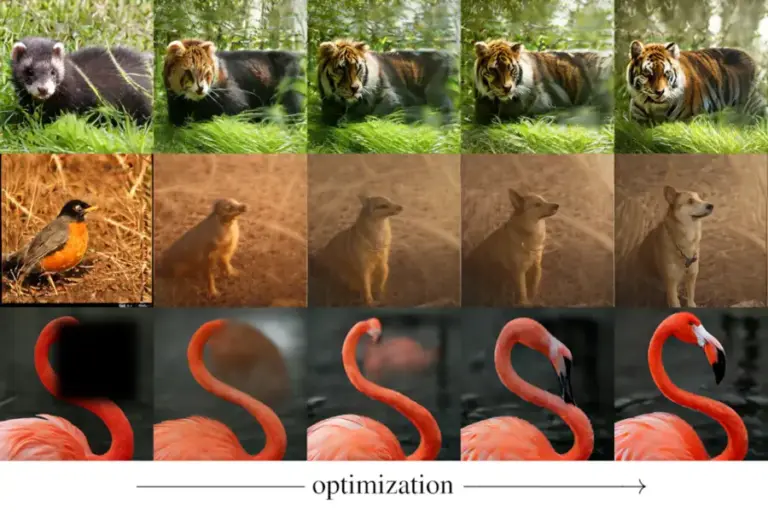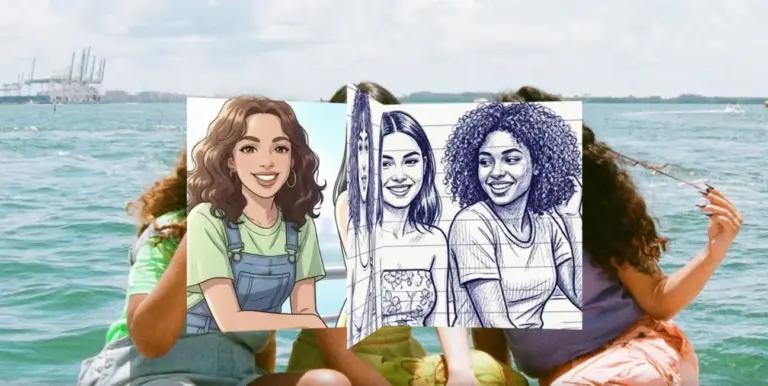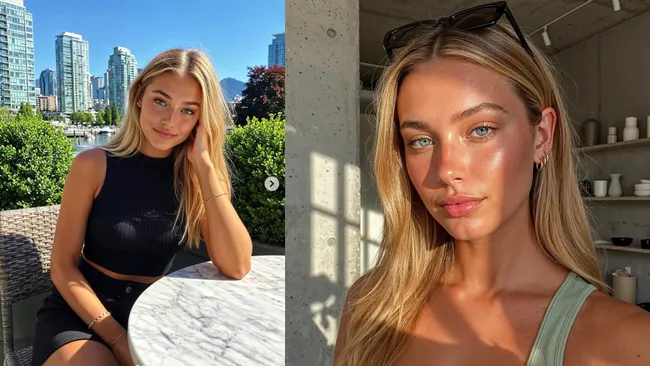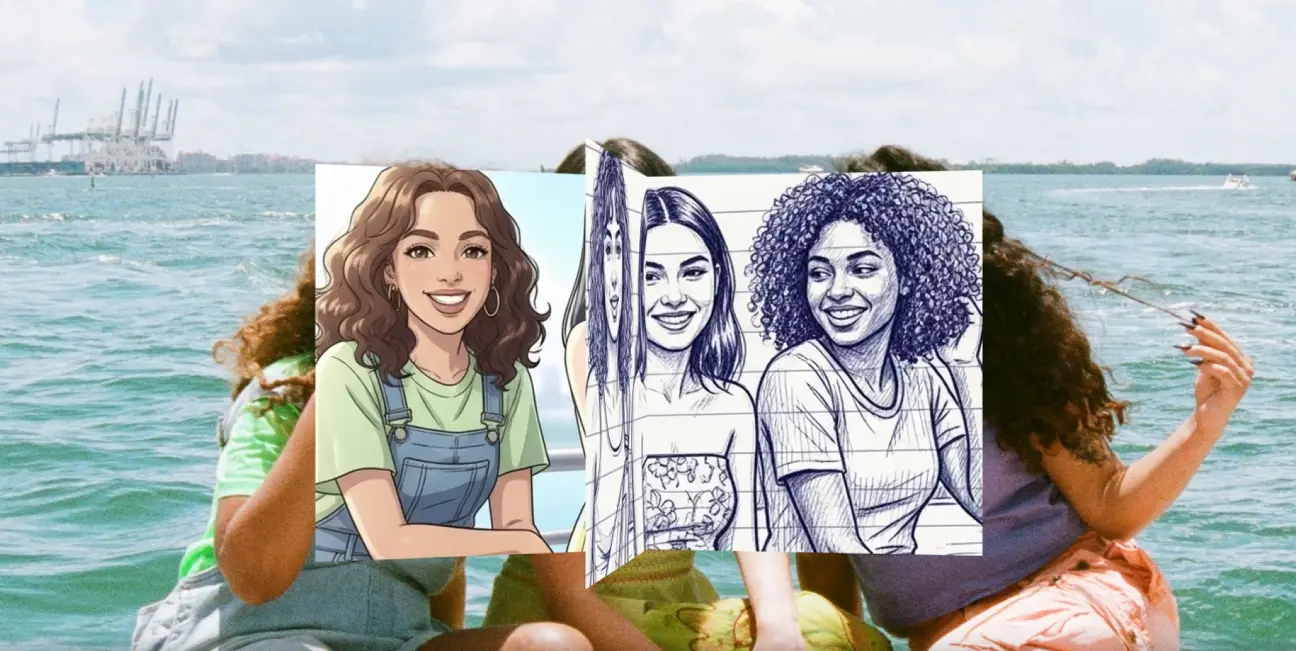
🎯 Key Takeaways
- Google Photos launches AI-powered ‘Photo to Video’ and ‘Remix’ features.
- New ‘Create’ tab centralizes all generative AI and creative tools for users.
- Features are powered by Google’s advanced Veo 2 video generation model.
- All AI-generated content is marked with both visible and invisible SynthID watermarks for transparency.
- The innovations signify Google’s commitment to democratizing advanced AI for mainstream photography.
The Dawn of Dynamic Memories: How Google Photos is Reshaping Photography with Generative AI
In a move that signals a profound shift in the landscape of digital photography and personal media, Google has unveiled a suite of powerful generative AI features for Google Photos. The introduction of ‘Photo to Video’ and ‘Remix’ tools, housed within a new, dedicated ‘Create’ tab, is not merely an incremental update; it is a fundamental re-imagining of how we interact with our most cherished digital memories. This update transforms Google Photos from a passive repository of images into a dynamic, creative studio, empowering millions of users to breathe new life into their static pictures. By leveraging the immense power of its Veo 2 video generation model, Google is making sophisticated AI-driven creativity accessible to everyone, from the casual phone photographer to the passionate hobbyist. This article delves deep into the technological underpinnings, global market implications, and the profound ethical questions raised by this new era of AI-powered photography.
A New Paradigm in Photo Management: From Still to Dynamic
For years, Google Photos has been a leader in intelligent photo management, using AI to automatically categorize images, identify faces, and surface “Memories.” However, the new features represent a giant leap beyond organization and into the realm of creation. The core of this revolution lies in two key functionalities: Photo to Video and Remix. The Photo to Video feature allows users to select a single still image and, with a simple prompt like “Subtle movements” or “I’m feeling lucky,” transform it into a dynamic, six-second video clip. This is not a simple looping GIF; it’s a generative process that intelligently animates elements within the scene—a person’s subtle smile, the rustling of leaves in a landscape, or the gentle movement of an ocean wave. It’s a tool designed to capture the essence of a moment that a single photograph, by its very nature, cannot. Imagine a cherished photo from a long-ago family gathering: the Photo to Video tool can now animate that scene, bringing a sense of motion and presence back to a static memory.
The Remix feature pushes this creative boundary even further. It enables users to take an ordinary photograph and reimagine it in entirely new artistic styles, such as anime, 3D animation, or a hand-drawn sketch. This capability turns every user into an artist, providing a powerful and intuitive way to express creativity without requiring any technical skill. The ability to transform a holiday snapshot into a vibrant anime scene or a portrait of a loved one into a unique sketch is a testament to the democratization of generative art. These tools, which were once the domain of highly skilled digital artists with access to complex software, are now available to anyone with a smartphone and the Google Photos app. This accessibility is a game-changer, not just for personal creative expression but for the entire creative industry. It blurs the lines between creator and consumer, turning every photo gallery into a potential canvas for innovation.
The Technological Core: Veo 2 and the Power of Generative Models
The magic behind these new features is Google’s sophisticated video generation model, Veo 2. While Google’s more advanced Veo 3 model, which includes audio generation, is making its way to platforms like YouTube Shorts and Gemini, the deployment of Veo 2 in Google Photos is a strategic move. Veo 2 is highly capable of generating high-quality, six-second video clips from static inputs, which is perfectly suited for the quick, memory-centric creations of Google Photos. This integration of a foundational AI model directly into a widely used consumer application is a clear indicator of Google’s strategy to embed its most advanced AI capabilities across its entire ecosystem. The model has been trained on a vast dataset of images and videos, allowing it to understand the nuances of motion, light, and texture, and to apply these principles intelligently to a static image. When a user selects a photo, the AI doesn’t just add a simple filter; it analyzes the content of the image—identifying subjects, backgrounds, and potential areas for movement—and generates new frames to create a fluid, short video. This process, while seemingly simple from the user’s perspective, involves complex calculations and an intricate understanding of visual dynamics.
In contrast to the earlier, more rudimentary photo animation tools, Veo 2’s power lies in its ability to generate novel content that feels organic. The “I’m feeling lucky” option, for instance, allows the AI to make creative decisions on its own, often with surprisingly delightful results. This partnership between human intent and AI creativity is a core theme in Google’s approach. By providing simple, accessible prompts, users guide the AI, but the generative model is responsible for the heavy lifting of the artistic creation. The fact that these features are being rolled out for free in Google Photos, unlike the subscription-based model for similar features in the Gemini app, underscores Google’s commitment to making AI a core, non-premium part of its everyday products. This approach aims to accelerate user adoption and, in turn, gather the valuable feedback necessary to refine and improve the underlying AI models for future iterations.
Global Market Implications: A New Era of Competition and Creativity
The launch of these features has significant global market implications. Google Photos is a dominant player in the digital photo management space, with billions of users worldwide. By integrating these powerful generative AI tools, Google is setting a new industry standard and intensifying the competition with rivals. Companies like Apple, with its Memories feature in the Photos app, and various third-party video and photo editing apps, will now be under pressure to innovate. While Apple’s Photos app offers curated video slideshows, it lacks the true generative capabilities now present in Google Photos. The introduction of these features marks a clear division: on one side are traditional photo management services, and on the other are platforms embracing full-scale generative AI to transform user content.
The global rollout, starting with the U.S., Canada, Australia, and New Zealand, with other regions to follow, is a standard and strategic approach for tech giants to test features and gather feedback before a wider launch. This phased approach allows Google to ensure the stability and safety of the features and to adapt them to regional and cultural nuances. The accessibility of these tools could also have a ripple effect on the global creator economy. With sophisticated video and art generation tools now in the hands of millions, we can expect to see an explosion of creativity on social media platforms. From unique short-form videos on TikTok and Instagram to creatively remixed images shared across personal networks, the content landscape is poised for a significant transformation. This move by Google is not just about a new app feature; it’s about providing the fundamental tools that will shape the next wave of digital creativity.
Another crucial aspect of the global market impact is the hardware ecosystem. While these features are available on both Android and iOS, Google’s investment in its own AI models and its recent partnerships, such as with Honor to bring Veo 2 to smartphones, indicate a strategic push to embed its advanced AI models deeper into the hardware ecosystem. This could create a competitive advantage for Android devices, particularly Google’s Pixel line, which often serves as the showcase for Google’s most advanced AI and software integrations. The synergy between software and hardware could become a key differentiator in a crowded smartphone market, with AI-powered creative tools becoming a standard expectation for premium devices.
The Ethical and Safety Framework: Transparency and Responsibility
As with any powerful generative AI tool, the launch of Photo to Video and Remix brings critical ethical and safety questions to the forefront. Google has been proactive in addressing these concerns by implementing a robust transparency framework. All content generated using these new features will include an invisible SynthID digital watermark, and generated videos will also have a visible watermark. This dual-watermarking approach is crucial for maintaining transparency and helping users and viewers differentiate between original content and AI-generated content. SynthID is a particularly important component, as it embeds a digital marker directly into the content in a way that is resilient to various forms of manipulation, such as cropping, resizing, and compression. This invisible watermark can be detected by special tools, providing a long-term, verifiable record of the content’s origin.
Google’s commitment to responsible AI development is further evidenced by its “red teaming” efforts, where internal and external experts test the models for potential misuse and unintended consequences. The company has also integrated user feedback mechanisms, such as thumbs-up and thumbs-down buttons, to continuously improve the models and address any issues. The goal is to create a safe and beneficial AI experience, but the challenges are immense. The potential for deepfake-style content, even in a benign context like a family photo, raises questions about consent, authenticity, and the nature of digital memory itself. The industry as a whole is grappling with these issues, and Google’s approach of transparency through watermarking is a leading example of how tech companies can navigate these complex ethical waters.
The global policy landscape is also rapidly evolving in response to generative AI. Regulations like the EU’s AI Act are setting new standards for transparency and accountability. Google’s proactive measures, such as SynthID, align with the spirit of these emerging regulations, positioning the company as a responsible leader in the space. However, as the technology becomes more powerful and widely distributed, the burden of ethical use will shift to both the creators and the platforms. It is a shared responsibility to ensure that these tools are used to enhance human creativity and connection, not to deceive or harm.
The ‘Create’ Tab: A Hub for the Future of AI-Powered Creativity
To make these features discoverable and easy to use, Google is introducing a new ‘Create’ tab. Located on the bottom bar of the Google Photos app, this tab will serve as a centralized hub for all of the app’s creative tools. This is a crucial user experience design decision. By consolidating these features—including the new Photo to Video and Remix, as well as existing tools like collages, highlight videos, and cinematic photos—Google is making a clear statement about the future of Google Photos. It is no longer just a place to store and organize memories; it is a creative workshop. The ‘Create’ tab’s presence signals to users that a new, more active relationship with their photos is not just possible, but encouraged. The tab will evolve over time, with Google promising to add more tools and refine existing ones based on user feedback. This iterative approach ensures that the platform remains at the cutting edge of consumer AI and creativity, continuously adapting to user needs and technological advancements.
The strategic placement of the ‘Create’ tab next to core functions like ‘Photos’ and ‘Search’ highlights its importance in the app’s overall architecture. It shifts the user journey from one of passive consumption and organization to one of active engagement and creation. For many users, this could be their first experience with advanced generative AI. By providing an intuitive, low-stakes environment to experiment, Google is effectively onboarding millions of people into the world of AI-powered creativity, a skill that will become increasingly vital in the future. The design of the ‘Create’ tab as a single, accessible entry point is a masterclass in product strategy, removing friction and encouraging exploration.
A Deep Dive into Creative Applications and Potential
Beyond the technical and business aspects, the most exciting part of this update is the boundless creative potential it unlocks. For photographers, this means new ways to present their work. A landscape photographer could use the Photo to Video tool to subtly animate a serene scene, making a still image feel alive. A portrait photographer could experiment with the Remix feature to create a stylized, illustrative version of a client’s photo, offering a unique and personalized product. The tools are not just for personal use; they have professional applications that could change how visual artists work and market their services.
For everyday users, the applications are even more personal. A parent could turn a static photo of their child’s first steps into a short video clip, preserving the moment with a sense of motion that a still image lacks. Friends could use the Remix feature to create funny and unique artistic versions of group photos to share on social media. The tools are designed to make personal storytelling more vivid, engaging, and imaginative. They are about enhancing the emotional connection we have with our memories, not just archiving them.
However, this new potential also comes with a learning curve and a shift in user habits. While the tools are simple to use, users will need to learn to think creatively about their static images. The prompts “Subtle movements” and “I’m feeling lucky” are a starting point, but as the technology evolves, we can expect more granular controls and custom prompts, giving users even greater creative latitude. The future of AI photography is likely a hybrid model, where AI and human creators work in tandem, each bringing their unique strengths to the process of creation. This is a symbiotic relationship where AI provides the technical and generative power, and the human provides the vision, emotion, and context.
Expert Opinions and Industry Reaction
The industry reaction to Google’s announcement has been largely positive, with a clear recognition of its significance. Tech analysts have praised the strategic integration of advanced AI into a mainstream consumer product. “This is not just another feature; it’s a statement of intent,” said a prominent industry analyst. “Google is telling the world that generative AI is no longer a niche, experimental technology. It’s a core component of the user experience.” Experts also highlight the importance of the transparency and safety measures, noting that Google is setting a precedent for how these powerful tools should be rolled out responsibly. However, some have also raised concerns about the potential for “uncanny valley” effects, where AI-generated movements or styles can sometimes feel slightly off or unnatural. This is a known challenge in generative AI, and continuous user feedback will be essential for Google to refine its models and address these issues. The debate around authenticity and the role of AI in personal memories is also a growing topic among ethicists and photographers. As one photography critic put it, “While the tools are exciting, we must be mindful of the difference between a memory and an AI-generated impression of one.”
Frequently Asked Questions (FAQ)
1. Who can use the new Google Photos features?
Initially, the Photo to Video and Remix features are rolling out to users in the United States, Canada, Australia, and New Zealand on both Android and iOS devices. Google plans to expand to more regions later this year.
2. How do the ‘Photo to Video’ and ‘Remix’ features work?
The ‘Photo to Video’ feature uses Google’s Veo 2 generative AI model to animate still photos into six-second video clips. The ‘Remix’ feature uses AI to transform photos into various artistic styles like anime or 3D animation. Both are powered by advanced AI that intelligently analyzes and generates new content based on your original image.
3. Are the AI-generated photos and videos watermarked?
Yes. For transparency, all AI-generated content will have an invisible SynthID digital watermark. Additionally, videos created with the Photo to Video tool will also have a visible watermark, similar to content generated by Gemini, to clearly indicate they were created by AI.
4. Is there a cost to use these new features?
No. Unlike some other generative AI features offered by Google, the Photo to Video and Remix tools in Google Photos are being rolled out for free to all users in the supported regions. There may be usage limits, but they are not a premium, subscription-based feature.
5. What is the new ‘Create’ tab?
The ‘Create’ tab is a new hub within the Google Photos app that centralizes all of the app’s creative and AI-powered tools. This includes the new Photo to Video and Remix features, as well as existing tools like collages and highlight videos, making them easier for users to find and use.
Conclusion: The Future is Generative
Google’s latest update to Google Photos is more than just a new set of tools; it is a powerful statement about the future of consumer technology. By seamlessly integrating advanced generative AI into a product used by billions, Google is not only enhancing the user experience but also shaping the future of digital photography itself. The move signals a shift from passive photo storage to active creative engagement, where our digital memories become raw material for new forms of storytelling and artistic expression. While the ethical questions around AI and authenticity are real and must be continually addressed, the potential for these tools to democratize creativity and help us connect with our memories in new ways is immense. The new ‘Create’ tab is the entry point to this future, and with the power of Veo 2 now in everyone’s pocket, the world is about to see a whole new wave of generative creativity. This is just the beginning of a fascinating journey, and Google Photos is leading the way.
The road ahead will undoubtedly involve new challenges, from refining the AI models to ensure natural and appealing results, to navigating the complexities of a global regulatory environment. However, by prioritizing transparency, safety, and user feedback, Google is laying a strong foundation for a future where AI and photography are not separate domains, but intertwined forces that empower us to see our world—and our memories—in a whole new light. The static image is officially a thing of the past; the future is dynamic, generative, and in the palm of your hand.
